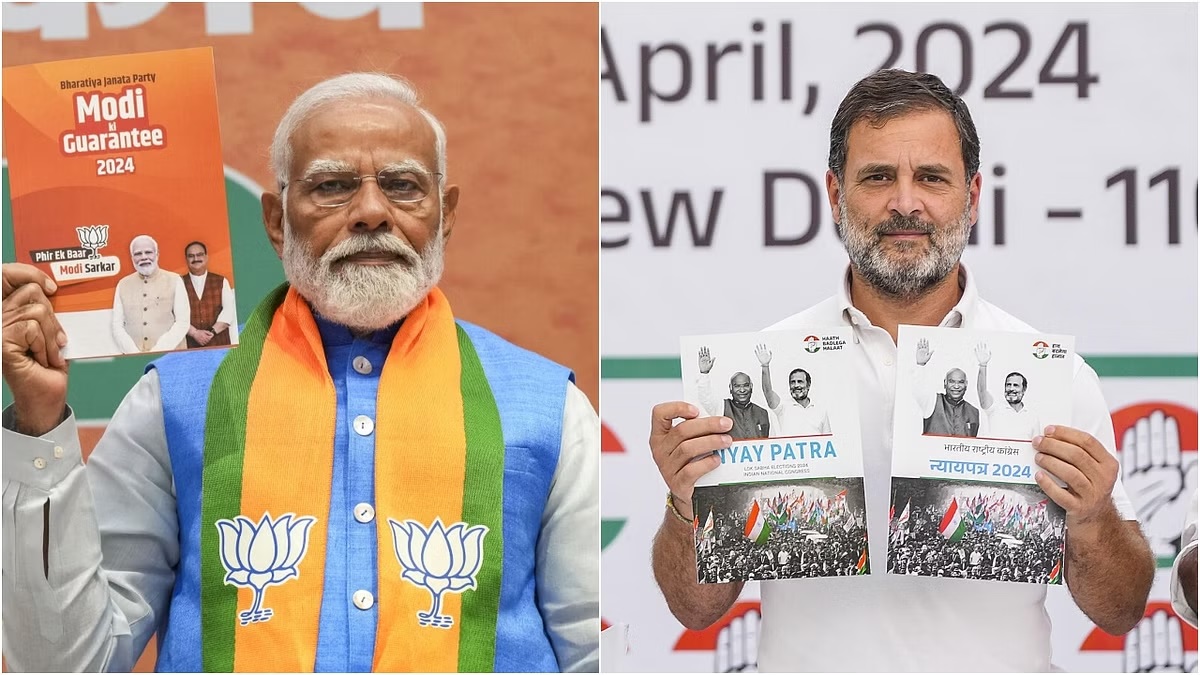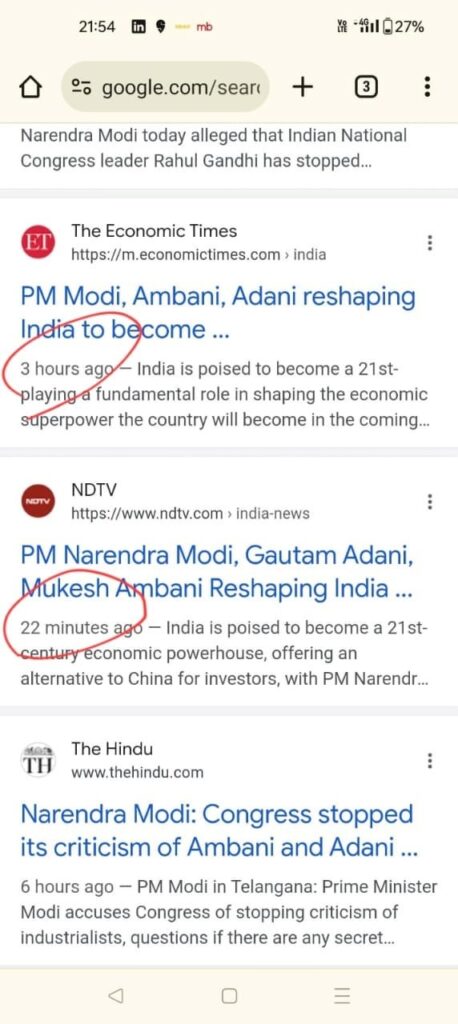Caveat: Crafting a compelling narrative is crucial for elections, but it may not guarantee victory if the media acts as a mouthpiece for the BJP. This necessitates the use of alternative platforms and grassroots mobilization to reach voters directly.
Crafting a solid narrative and mobilising voters are crucial for successful election campaigns. Effective narrative management involves creating compelling messages, evoking emotions, and shaping public perception. Simultaneously, optimising grassroots operations through effective booth management helps coordinate booth committees and actively influence voter behaviour through targeted outreach.
In the high-stakes electoral battle, two potent narratives have emerged, challenging PM Modi and BJP: Rahul Gandhi’s relentless “ant-like” critique portraying the government as pro-affluent, and Arvind Kejriwal’s masterful “bee-sting” narrative pitting “Modi versus BJP,” catching the ruling party off-guard.
Rahul Gandhi’s Ant-Like Persistence
Rahul Gandhi’s narrative, persistent and tenacious like an ant colony’s labour, portrayed the Modi government as a ‘suit-boot ki sarkar’ (government for the affluent), consistently failing the ordinary people. Despite numerous allegations of corruption and mismanagement, this narrative initially struggled to tarnish Modi’s image, which was perceived as incorruptible and often described as water rolling off a lotus leaf. However, Rahul Gandhi’s relentless critique, backed by consistent evidence, eventually compelled Modi to acknowledge the allegations of black money against ‘Adani and Ambani.’
In a surprising twist, Modi claimed that Adani and Ambani sent truckloads of money to Rahul Gandhi. Gandhi swiftly retorted with a simple counter-video.
If Adani and Ambani’s channels shared Modi’s speech, they imply their financial masters are corrupt, as the Prime Minister himself claimed. If they hadn’t published the video, they would have ignored a critical speech and a key counter-narrative of their political master.
A few attempted to confuse the search by re-updating old articles mentioning Adani, Ambani, and Modi — a tactic to potentially bury Modi’s rant against Adani and Ambani, making it harder to find through searches on the same.
Rahul was very quick to counter this claim. It was a narrative Checkmate
Send CBI, ED to probe Adani, Ambani: Rahul Gandhi’s retort to Modi’s ‘tempo loads of money’ jibe
Arvind Kejriwal’s Sharp Bee-like Narrative sting
In Delhi’s electoral landscape, where voters prefer AAP for assembly but BJP for Lok Sabha elections, Arvind Kejriwal has crafted a narrative akin to a bee’s sharp, buzzing sting. This narrative aims to appeal to swing voters who have been swayed by the “Modi Magic” in the past. To bolster their chances of defeating BJP, AAP has allied with Congress, hoping to combine their transferable vote bases. However, this alliance may not be enough. The real power of AAP’s narrative lies in its potential to negate the Modi effect and sway BJP voters towards AAP. Kejriwal’s sharp and stinging narrative is crafted to precisely achieve this — to puncture the Modi aura and compel swing voters to reconsider their choices, potentially tilting the scales in AAP’s favour in this high-stakes electoral battle.
Step 1 — He begins by visiting the Hanuman Mandir, establishing his cultural credentials as a Hindu and countering the BJP’s religious narrative without alienating Hindu voters.
Step 2.1 — Kejriwal then shifts his focus to Prime Minister Modi, accusing him of being autocratic and highlighting the pressure faced by opposition leaders like Uddhav Thackeray, Mamata Banerjee, and M.K. Stalin, avoiding mentioning Rahul Gandhi and the Congress party to frame the issue as a personality clash rather than a party-driven conflict.
Step 2.2 — Amplifying his narrative, Kejriwal references Modi’s treatment of his party stalwarts, such as L.K. Advani, Murli Manohar Joshi, Vasundhara Raje, and Shivraj Singh Chouhan, suggesting an autocratic leadership style and potential isolation within the BJP ranks.
Step 3 — He then raises the spectre of Modi’s potential retirement at 75, hinting at the ascendancy of Amit Shah as the next leader, effectively forcing BJP voters to consider whether they are voting for Modi or Shah’s future leadership.
Kejriwal’s masterful narrative presents a checkmate situation for the BJP. If they agree with his assertion about Modi’s retirement, it implies that the Prime Minister will step down within a year. If they disagree, it reinforces the narrative of Modi using the age of 75 as a pretext to sideline influential BJP members for his advantage, painting a picture of an autocratic leadership style. This strategic approach demonstrates a masterclass in narrative warfare, putting the BJP on the defensive and risking the alienation of a segment of voters, highlighting the potency of Kejriwal’s narrative in the battle for swing voters.
Conclusion
Arvind Kejriwal and Rahul Gandhi have masterfully crafted narratives that have effectively trapped PM Modi and the BJP’s PR machinery. The critical question remains: will these narratives transcend mere storytelling and transform into effective campaigns, mobilizing voters and creating the required swing to reshape the political landscape? The ability of these narratives to resonate with the electorate, counter the “Modi Magic,” and translate into tangible voter mobilization efforts will ultimately determine the election result, shrouding the political landscape in a veil of suspense and anticipation.
(The author first published this reflection here)


